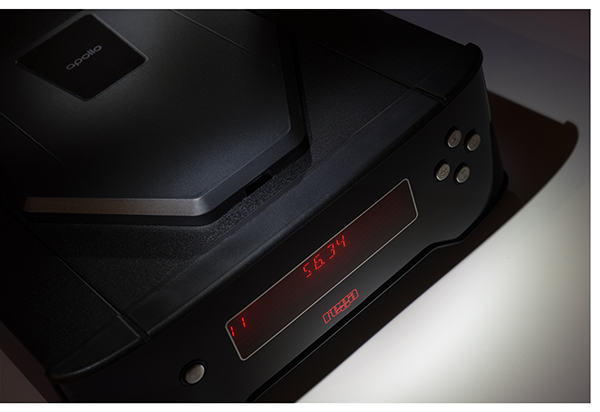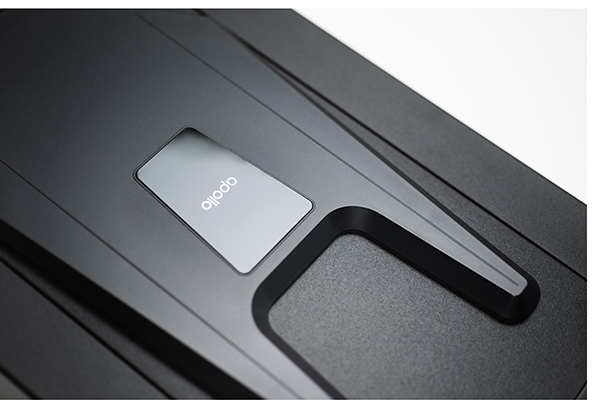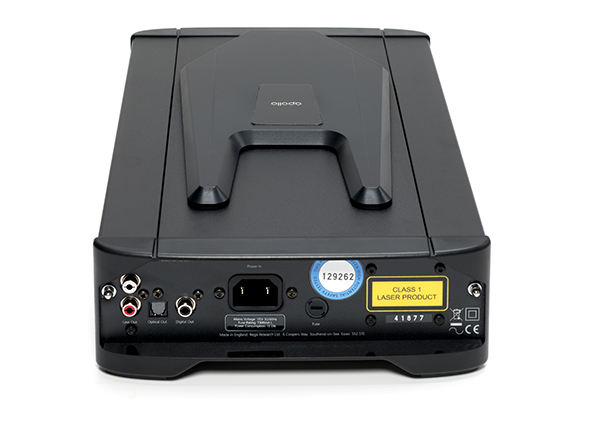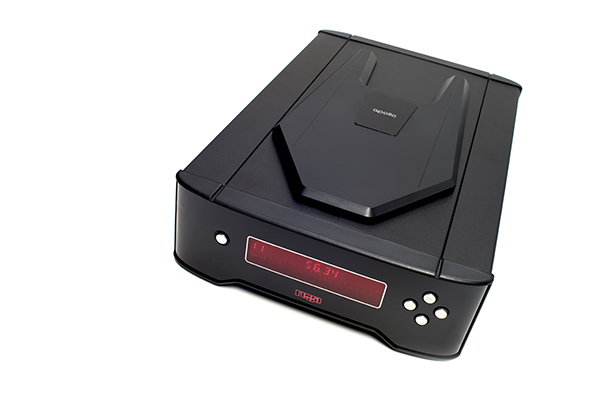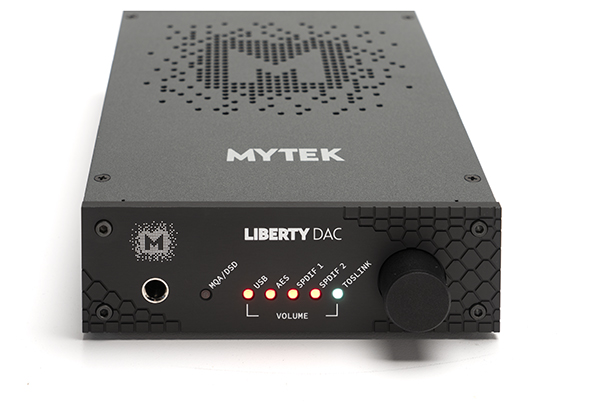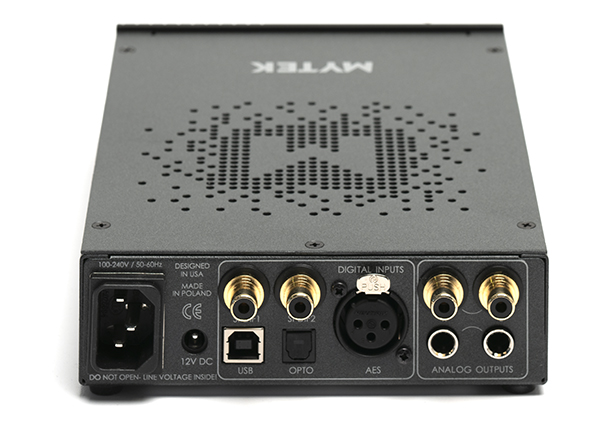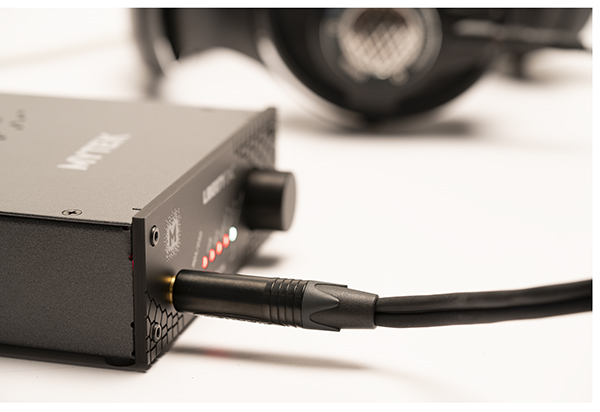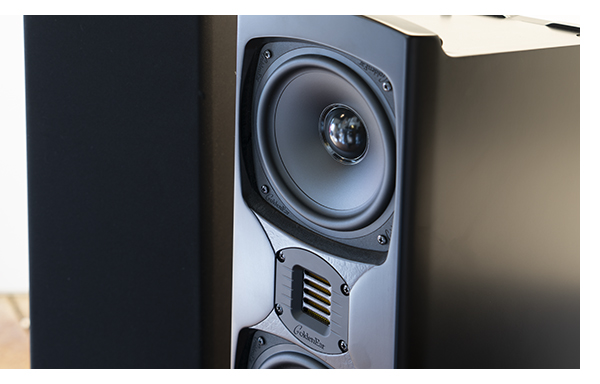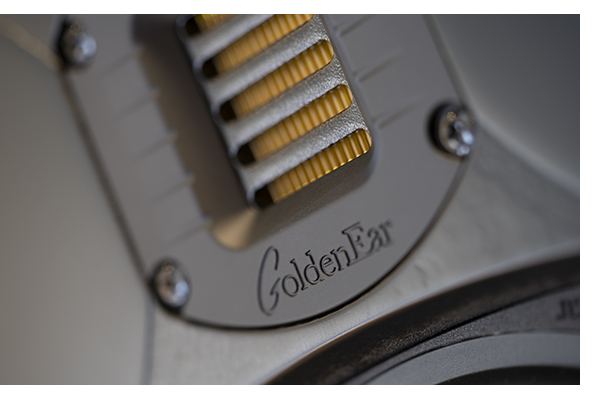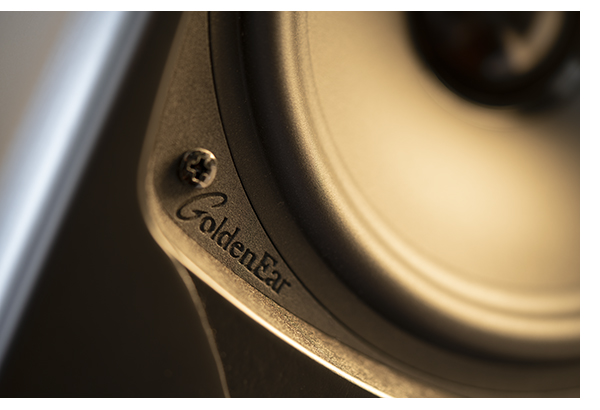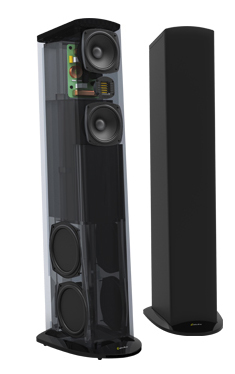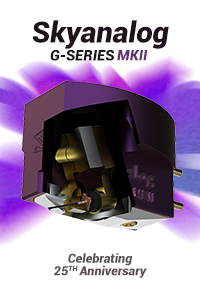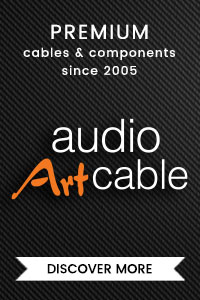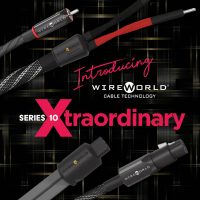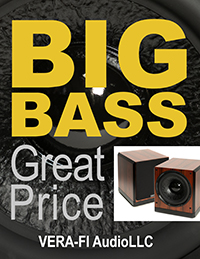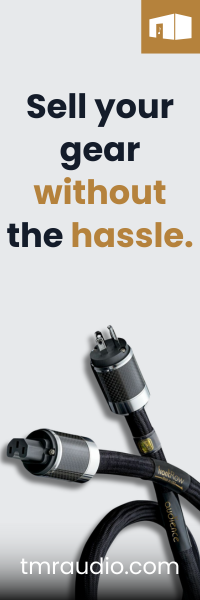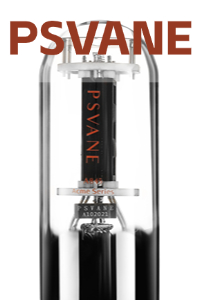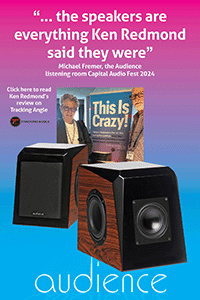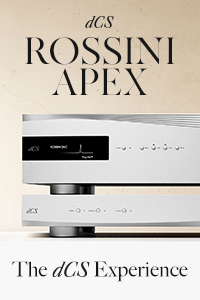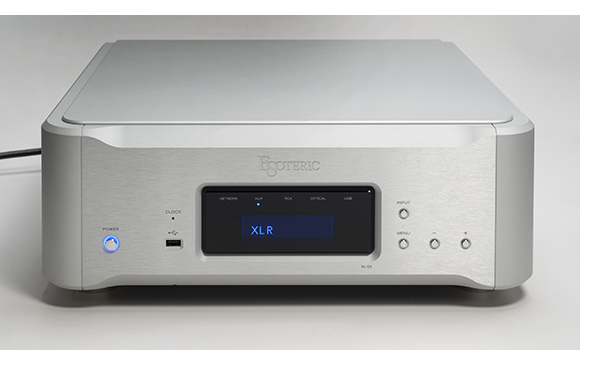 Listening to a slew of Peter Gabriel favorites, via NAS drive and ROON, I ponder in earnest the thought of life without a turntable.
Listening to a slew of Peter Gabriel favorites, via NAS drive and ROON, I ponder in earnest the thought of life without a turntable.
Which trend to follow? The declutter lady, telling us to pare down to a minimal compliment of things that bring us joy, or the vinyl enthusiasts, that want us to condemn digital and buy as many overpriced LPs as possible? Even though I’m a life-long vinyl enthusiast, after living with the N-01 for some time now, this minimalist solution certainly is enticing, especially now with Qobuz and Tidal at my disposal.
Esoteric’s N-01 weighs in at $21k; a world class DAC and streamer (or network player, as they call it)
For those not familiar, Esoteric is the premium division of TEAC, the same company that brought a full line of incredible tape decks to the world in the 70s and early 80s. All Esoteric components are hand built and hand tested to the highest specification.
Ultimate versatility
With optical, USB, AES/EBU and RCA digital inputs along with the Ethernet connection, chances are a great many of you will be using this as a DAC via an analog preamplifier, and the N-01s output level up all the way. Thus negating any issues with a very slight loss of resolution at the lowest levels. There is also a USB slot on the front panel [町田1] to accommodate a USB stick. This has to be the most inconvenient way of transmitting music ever – so I did not bother with this at all, but if this is how you do it, it will be a welcome addition. There is a second USB slot on the rear panel as well, adding to the N-O1s flexibility.
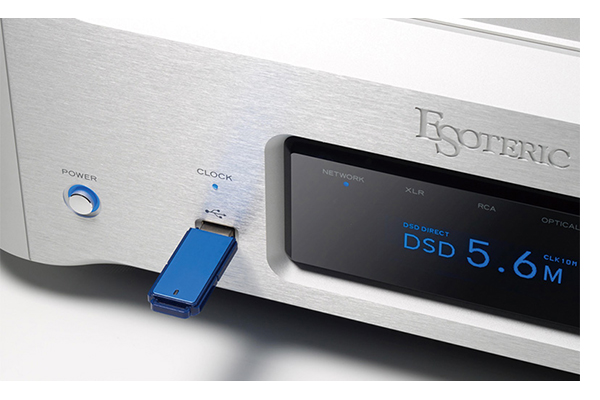 Of course, you can use the front panel USB port for an external hard drive, which could be handy for out of town guests to bring their music. As someone who is as territorial as a Chow-chow when it comes to letting others add random devices to their hifi system, if you’re coming to my house and you can’t find something on Tidal, Qobuz, or a NAS with 12,000 CDs on it, we probably shouldn’t be listening to music together anyway. But you can, with the N-01.
Of course, you can use the front panel USB port for an external hard drive, which could be handy for out of town guests to bring their music. As someone who is as territorial as a Chow-chow when it comes to letting others add random devices to their hifi system, if you’re coming to my house and you can’t find something on Tidal, Qobuz, or a NAS with 12,000 CDs on it, we probably shouldn’t be listening to music together anyway. But you can, with the N-01.
Besides, plugging in an external drive to the front panel takes away from the aesthetic of the N-01. Like all Esoteric products, the N-01 is beautiful to behold. Their casework is some of the best in the business, and I appreciate that their products all have a similar look and feel. This is a massive box, weighing in at just under 60 pounds, and it comes in a box that’s about half the size of a dishwasher – you’ll have to get through four sets of cartons to get to your N-01.
There’s as much beauty lurking inside the casework of the N-01 as there is on the outside. The power supply is separated from the signal carrying electronics by a thick, Nickel plated, pure steel plate. The bottom half of the N-01 reveals four massive toroid power transformers and two banks of capacitors that you might expect to see in a power amplifier. That a DAC has such a massive power supply speaks volumes. And the attention to detail everywhere else is equally fanatical.
A quick look at the spec sheet reveals that the N-01 plays everything. Everything from the lowest resolution MP3 to the highest resolution DSD file and MQA, so it’s safe to say this component is future proof. I’ve never been a DSD fan, so this is the only aspect of the N-01s performance I can’t comment on directly, with enough depth to have meaning. But if you have a NAS full of DSD files, I’m sure it will be up to task. All of the DSD files I’ve heard in the Esoteric rooms at shows have been fantastic.
All of my listening was done within the ROON environment, with the N-01 as an endpoint. This works incredibly well on a number of levels, but primarily because it is so much better at integrating multiple storage and streaming locations. It also eliminates the more cumbersome user interface available with Tidal or Qobuz.
Initial listening
Functionality aside, the N-01’s spot-on neutral tonal balance. Some components can impart a sonic signature that is either overly etched and hyper-detailed, or slightly warm, this leaves the end user making other compromises in the audio chain to “tune out the difference.” Starting with a neutral source lets you fine tune elsewhere in your system, assuring much more longevity (i.e. the need to upgrade later) for said component. A good thing when spending $20,000.
Those needing an upgrade, can add the G-02X clock ($6,500) or the G-01X Rubidium clock. Staffer Tom Caselli uses the latter in his digital front end and claims a massive increase in sound quality, as it should for the price. Past experience with adding a clock in the context of our players has always been the ability to achieve another level of refinement – dare we say a more analog like presentation. This gives you an excellent upgrade path with your N-01, should you need even more performance.
The N-01s grain free sound immediately puts you at ease, with a palpability quickly putting arguments to rest. Tracking through a bit of Ella Fitzgerald and Diana Ross, as well as the excellent Jackson Five: The Stripped Mixes, there is a delicacy afoot here that is rarely associated with digital playback.
Acoustic instruments come through with an excellent balance of tonal accuracy and saturation. The N-01 never sounds “digital.” Pianos, violins, and other stringed instruments breathe with the correct amount of attack and decay to further paint the illusion of real instruments in a real space – provided the rest of your system is up to task. Finally, the N-01 paints a large, but not overblown sonic landscape in your listening room that feels right from a sense of scale. Where some components can only offer up a huge, three-dimensional sonic picture, the N-01 expands and contracts as the music demands – a true sign of engineering prowess and maturity.
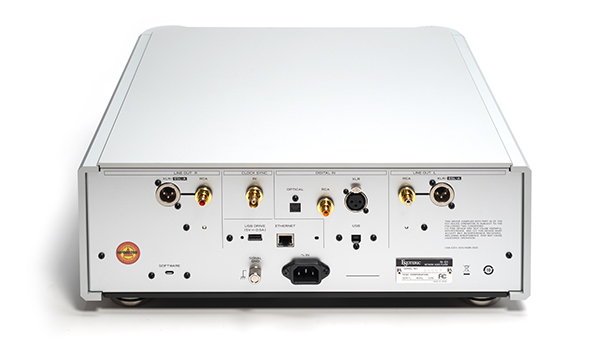 Solo or ensemble use
Solo or ensemble use
Using the N-01 with the Pass XS Pre, the Nagra Classic, and the conrad-johnson GAT 2 preamplifiers all proves excellent, with the neutrality of the N-01 merely allowing the sonic signature of these top shelf preamplifiers shine through. A similar result was achieved using the N-01 by itself with the Pass XA30.8, the McIntosh MC275 and the Luxman M-900u power amplifiers. As someone who prefers a slightly warm tonal balance, I particularly enjoyed the combination of the N-01, the MC275 and my Quad 2812 speakers. Thoughts of living without a turntable again filled my head.
Embellishment aside, further critical listening reveals the N-01s ability to separate fine musical details within densely packed recordings, delivering fantastic musical pace, no matter what the selection. Even though said CSN tracks possessed slightly more tonal saturation, the air around the four musicians’ voices was greater, and the distinction of their vocal character easier to discern.
More choices
With so many recent arguments about MQA, I submit that not all MQA decoders are created equal. That being said, the N-01 does a fantastic job at unfolding MQA files. Every A-B comparison on Tidal between the standard 16/44 and MQA version had the MQA rendition revealing more musical information in every sense. Comparing some MQA tracks on Tidal to 24/96 proved to be a mixed bag – for now, we’re going to relegate that to differences in mastering and internet arguments. Suffice to say again, MQA performance through the Esoteric is some of the best I’ve experienced.
Esoteric offers their own Sound Stream app for those not wishing to use ROON, but now that this device is fully ROON compliant, it’s somewhat of a moot point. I loved just plugging it into the network and getting down to business with my music collection.
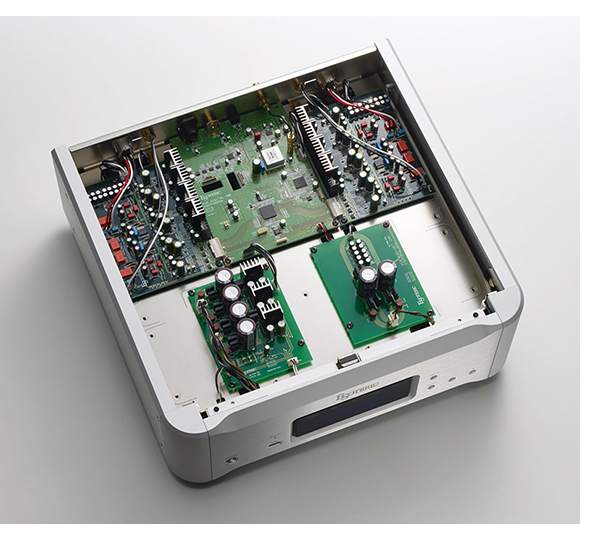 Esoteric combines multiple 32-bit DAC chips and a 35-bit D/A processing algorithm to process the digital signal with full 35-bit resolution. With old school 16-bit chips falling back in fashion, I prefer the logic behind processing with extended bit depth and that Esoteric implements it to perfection here. There are multiple upsampling and filter settings, but as with my experience with dCS and a few other manufacturers, I saved myself hours of agonizing and second guessing, using it at the factory settings.
Esoteric combines multiple 32-bit DAC chips and a 35-bit D/A processing algorithm to process the digital signal with full 35-bit resolution. With old school 16-bit chips falling back in fashion, I prefer the logic behind processing with extended bit depth and that Esoteric implements it to perfection here. There are multiple upsampling and filter settings, but as with my experience with dCS and a few other manufacturers, I saved myself hours of agonizing and second guessing, using it at the factory settings.
Maybe the factory guys are on to something, because that always seems like the best balance of overall musical priorities. Other settings may provide a slightly warmer tonal balance or something else, but it always ends up being the thing that you keep changing, relentlessly. I found bliss with the factory settings.
What’s in a name?
Because the Esoteric N-01 has such a high-quality DAC built in, with the ability to add a clock later, should you wish, it seems a bit of a misnomer to label it a mere “network player.” I like to think of it as a destination level DAC that just happens to stream files. It certainly seems like a much better value proposition from this angle.
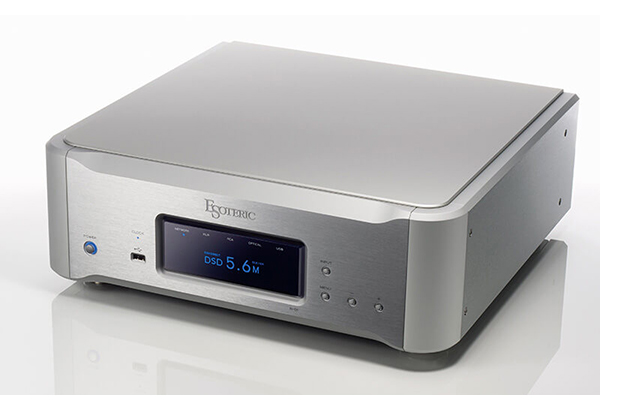 The Esoteric N-01
The Esoteric N-01
MSRP: $21,000
www.esoteric-usa.com
Peripherals
Preamplifers Nagra Classic, Pass XS Pre
Power amplifiers Pass XA200.8 monos, Nagra Classic, Audio Research REF160M
Cable Cardas Clear
Speakers Focal Sopra no.3 w/REL 212 subwoofers




